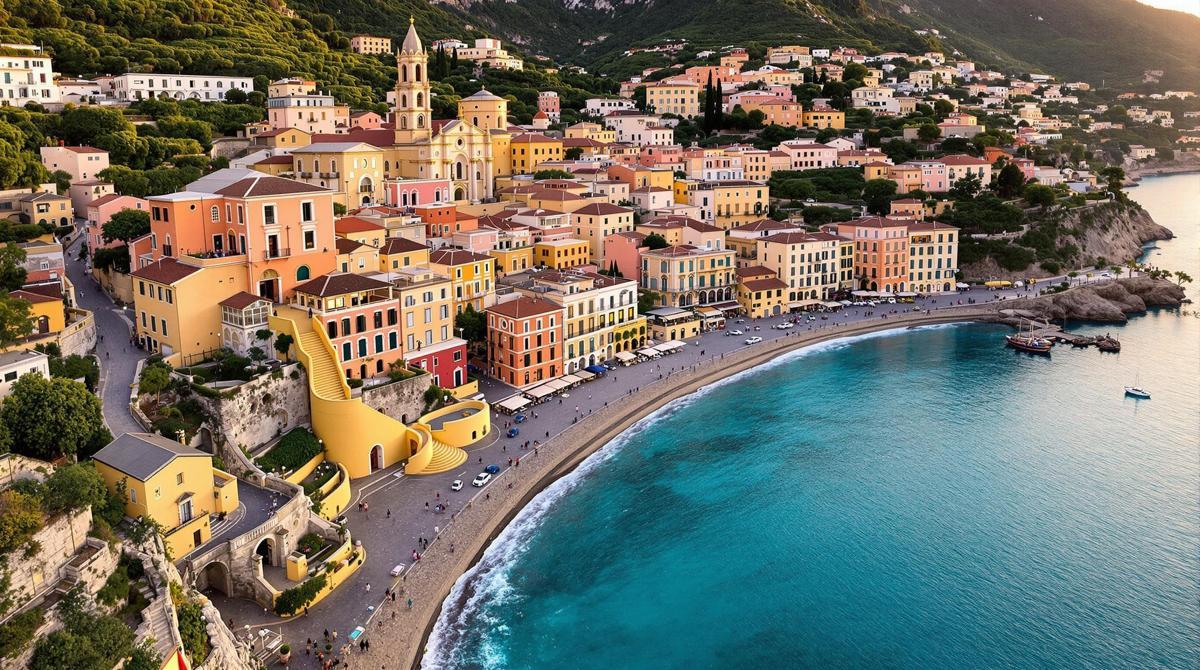Hidden between Monaco and the Italian border lies a dazzling coastal town that feels like a secret the French have been keeping from the world. Menton, with its pastel-colored buildings cascading down to azure Mediterranean waters, offers a perfect blend of Riviera glamour and authentic charm without the crowds that plague nearby destinations.
The town where lemons grow sweeter than anywhere else in Europe
Menton enjoys a unique microclimate so mild that lemons grow year-round, producing fruit with exceptional sweetness and fragrance. This citrus legacy is celebrated each February during the spectacular Fête du Citron (Lemon Festival), where towering sculptures made from over 140 tons of citrus fruits transform the town into a fantastical open-air exhibition.
“Our lemons are to citrus what champagne is to wine – distinctly aromatic with a perfect balance of acidity and sweetness found nowhere else,” shares Jean Moreau, a fifth-generation lemon farmer.
The Italian-French fusion town with an identity crisis
Perched at coordinates 43.7769° N, 7.5017° E, Menton only became officially French in 1861, explaining its compelling architectural blend. The Old Town’s maze of narrow, rainbow-hued alleyways feels distinctly Italian, while the elegant Belle Époque buildings along the seafront exude quintessential French Riviera glamour.
Climbing the bright yellow Les Rampes Saint Michel staircase to the Basilique Saint Michel Archange rewards visitors with postcard-perfect views that rival even Monaco’s famous vistas.
The botanical paradise where exotic species thrive
Menton’s microclimate has created another miracle: gardens where tropical and subtropical plants flourish against all odds. The Jardin Botanique Val Rahmeh houses over 1,500 exotic species, including some of the rarest plants in Europe, making it a pilgrimage site for botanists worldwide.
These lush sanctuaries offer a stunning contrast to desert landscapes that transform seasonally elsewhere in the world.
Where artists found their muse
The Musée Jean Cocteau houses the largest public collection of works by the famed French artist who fell deeply in love with Menton. The museum’s striking contemporary building juts out over the water like a series of angular seashells – a modern masterpiece that somehow harmonizes perfectly with the town’s historical character.
“The light in Menton has a crystalline quality that reveals colors in their purest form. It’s why so many artists have been drawn here across centuries,” explains curator Marie Dupont.
The untouched Mediterranean beaches
While beaches in nearby Nice and Cannes can feel like sardine cans in summer, Menton’s Plage des Sablettes offers a relatively uncrowded stretch of sand with crystal-clear waters. The beach curves gently beneath the Old Town’s protective embrace, creating a picturesque swimming spot that’s remarkably preserved compared to most Mediterranean hotspots.
A culinary frontier where Italy meets Provence
Menton’s restaurants serve a unique fusion cuisine that blends Italian and Provençal influences. Local specialties include barbajuan (Swiss chard and ricotta fritters), pissaladière (caramelized onion tart), and countless lemon-infused dishes that showcase the town’s famous citrus.
Unlike the blending of traditions in far northern communities, Menton’s cultural fusion feels seamlessly Mediterranean.
When to visit this Mediterranean marvel
While summer brings perfect beach weather, May and September offer warm temperatures without the crowds. Winter visitors are treated to mild days (average 50°F/10°C) and the spectacular Lemon Festival, making Menton a rare year-round destination on the Riviera.
Much like certain Swiss villages that seem frozen in time, Menton preserves a more relaxed Mediterranean lifestyle that has largely disappeared from its glamorous neighbors.
A day in Menton feels like stepping into a painting where colors seem more vivid, lemons taste sweeter, and time moves more slowly than anywhere else on the French Riviera. It’s the Côte d’Azur as it was meant to be experienced – beautiful, authentic, and blissfully uncrowded.
